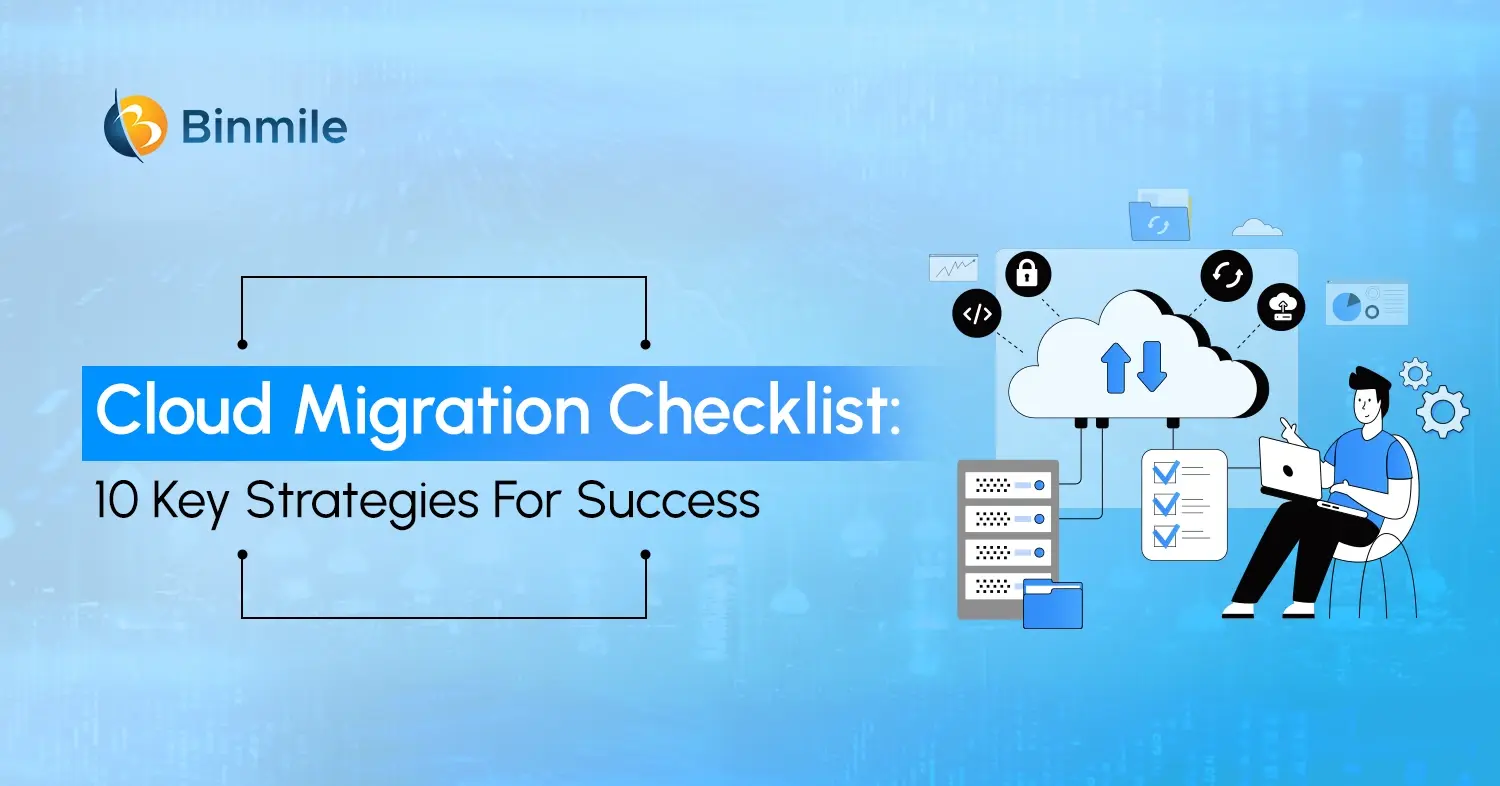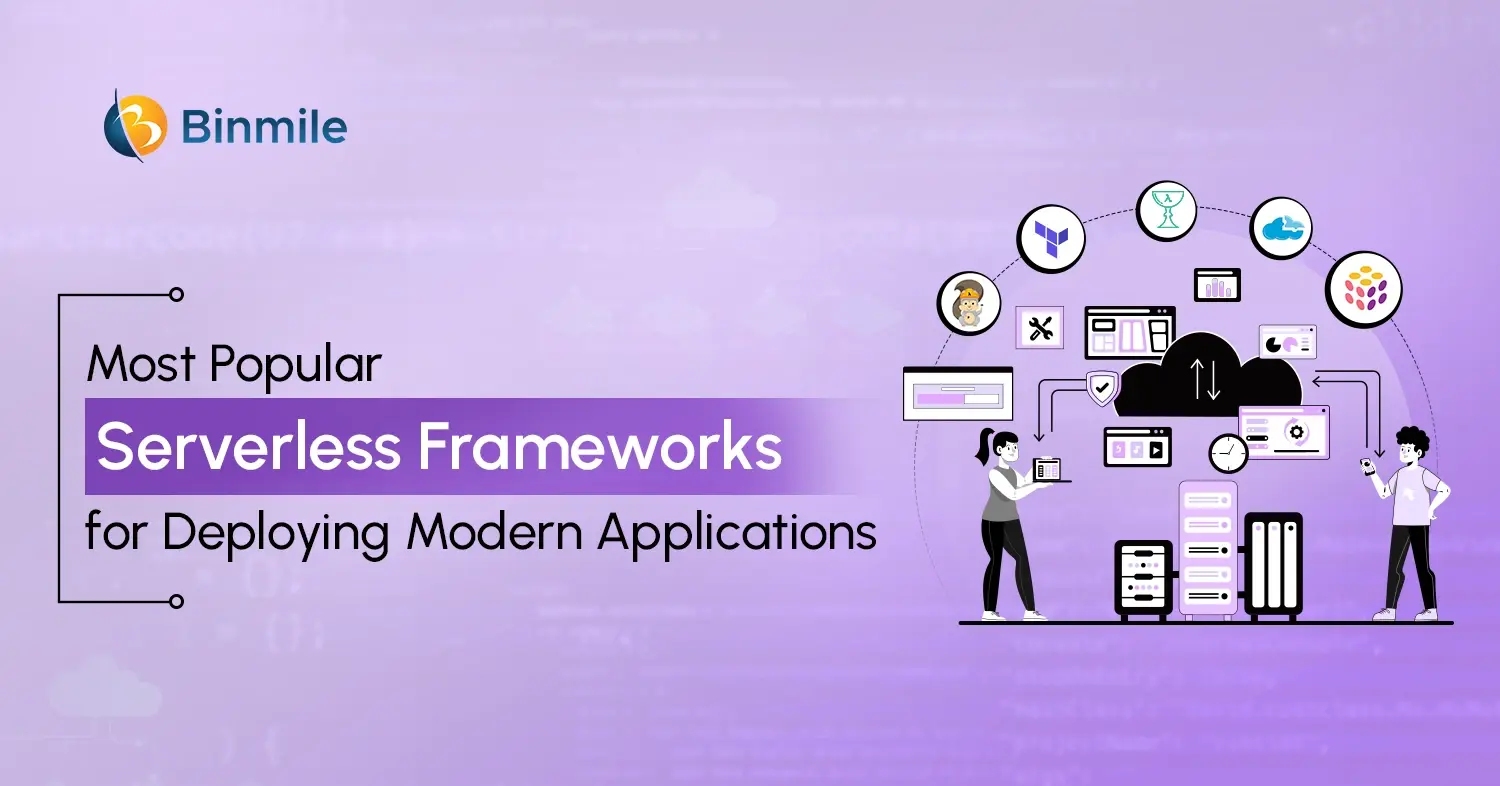- AWS vs Azure vs Google Cloud
- best practice to reduce cost of cloud computing
- calculate cloud computing cost
- cloud computing cost calculator
- cloud computing cost factors
- cloud computing models
- cloud cost optimization
- cloud pricing models
- common cloud pricing models
- cost of cloud computing
- factors includes cost of cloud computing
- how to calculate cost of cloud computing
- how to reduce cloud computing cost
Cloud computing has revolutionized the way businesses operate today. From established enterprises optimizing their workloads to startups experimenting, iterating, and scaling rapidly, all are freed from the constraints of traditional infrastructure investments. However, despite the cloud’s pervasive impact and its continued influence on the innovation landscape, one crucial component has been hindering many organizations from leveraging this technology: the cost of cloud computing. With large IT projects running 45% over budget, it’s easy to overspend on cloud computing without careful planning and attention. That’s why businesses must understand the importance of cloud cost optimization, empowering them to make informed decisions and take control of their financial future.
After all, cloud computing services can be a powerful asset. However, they can quickly become a liability if used carelessly, as your organization misallocates resources and misses opportunities for cost savings. This potential risk highlights the importance of understanding the factors that influence the cost of cloud computing, the various cloud computing models, and their associated pricing structures. Additionally, we’ll provide a few practical tips for effective budgeting, resource allocation, and optimization of cloud expenditures, ultimately leading to higher returns on investment and a more informed and proactive approach to cloud usage.
What is Cloud Computing?
According to Microsoft, cloud computing is the delivery of “computing services—including servers, storage, databases, networking, software, analytics, and intelligence—over the internet (“the cloud”) to offer faster innovation, flexible resources, and economies of scale.”
Cloud computing models offered by the top cloud platforms rely on the concept of sharing on-demand computing resources, software, and information over the internet. There are different ways users, whether companies or individuals, pay to access a virtual pool of shared resources, such as compute, storage, and networking services, located on remote servers owned and managed by service providers.
4 Common Cloud Pricing Models
There are several models for accessing cloud computing services. These are:
- Pay-as-You-Go (PAYG): In this model, users pay only for the resources they consume, offering them flexibility but potentially higher costs for unpredictable workloads.
- Reserved Instances: The model offers discounts for committing to specific resources over 1-3 years, making it ideal for steady workloads.
- Spot Instances: When there is unused capacity, it is offered at significantly reduced rates; however, instances can be terminated with short notice.
- Consumption-Based Pricing: Under this model, costs are calculated based on actual usage, ensuring scalability and cost efficiency.
7 Factors Influencing Your Cost of Cloud Computing: In-Depth Look
Many organizations find themselves facing unexpectedly high cloud bills. Understanding what drives these costs is essential for effective financial planning and optimization. Let’s explore the seven key factors that have the most significant impact on your cloud computing expenses.

1. Infrastructure Choices
Your cloud spending begins with the infrastructure you choose. Each provider—AWS consulting services, Google Cloud, or Azure cloud services—offers distinct pricing structures, along with various instance types tailored to specific workloads. A mismatch between infrastructure and workload often leads to unnecessary costs, either through over-provisioning or by creating performance issues that necessitate additional resources to rectify.
2. Consumption Patterns
Because cloud billing is usage-based, your costs reflect how you consume resources. It’s essential to understand whether your workloads are steady or unpredictable. Do they follow regular cycles—daily, weekly, seasonal—or spike without warning? Additionally, consider the location of your users and how it impacts access and traffic. When workloads aren’t predictable, organizations often end up paying higher rates for on-demand capacity during peak times.
3. Resource Optimization
One of the primary reasons for increasing cloud bills is inadequate resource management. This includes underutilized virtual machines that run continuously, instances that are larger than necessary, resources left behind after they are no longer needed, and legacy systems that were not designed with cloud efficiency in mind. Research shows that nearly a third of cloud spending may be lost to these issues.
4. Data Management Costs
While computing resources usually draw the most attention, data-related expenses can quietly become the most significant part of the bill. These include storage for growing data sets, fees for moving data across regions or out to users, high-performance database costs, and charges for backups or redundancy. Data egress, in particular, can become expensive when large volumes are transferred between environments or to end-users.
5. Architectural Decisions
The way your systems are built directly affects your cloud spending. Choosing between a monolithic structure and microservices, deciding how much to rely on containers or serverless models, setting up your deployment strategy across regions, and establishing availability and recovery standards—all of these choices matter. Cloud-native designs can be cost-effective, but only when carefully planned and implemented.
6. Operational Practices
Day-to-day operations play a significant role in overall cloud spending. This includes how test environments are managed, the extent of automation in development workflows, the implementation of monitoring, and whether there is a clear system for tracking and assigning costs. Teams with structured financial operations around cloud use generally report significant cost savings.
7. Pricing Models and Commitments
To achieve significant cost savings, enterprises must assess and plan their commitment strategy and then manage their planning models accordingly. Understanding usage patterns and deciding when, how much, and how frequently to commit is crucial. A blended strategy—combining long-term commitments for core workloads with flexible pricing for variable demand—is typically the most effective.
Optimize cloud expenses that maximize efficiency without compromise and build more innovative, cost-efficient solutions that fuel growth.

How to Manage the Cost of Cloud Computing: Tips for Effective Budgeting
Cloud computing offers incredible flexibility and scalability, but costs can quickly spiral out of control without proper management and oversight. Here are five practical tips to optimize your cloud spending while maintaining performance.

1: Implement Robust Resource Tagging
Visibility helps you understand what, where, when, and how cloud computing costs are incurred. Organizations must establish resource tagging systems across all cloud resources to monitor expenditure at departmental, project, and environmental levels. This holistic overview enables the tracking and identification of cloud usage for each department, facilitates the development of cost allocation reports, and allows for the quick identification of opportunities for optimization.
2: Right-Size Your Resources
Many organizations significantly over-provision their cloud resources, resulting in substantial costs in their cloud computing budgets. Evaluate how your resources are used in practice, then decrease your reserved instances when they rarely achieve their target capacity. Select cloud instances that fit your workloads. For example, devices that require high CPU performance should use compute-optimized cases, as they optimize performance over general-purpose options.
3: Leverage Auto-scaling and Scheduling
Don’t pay for idle resources. Auto-scaling should be deployed to adjust your capacity levels according to demand fluctuations, which ensures you spend resources only on active usage needs. Utilize automatic resource shutdown scheduling for non-production environments to prevent wastage of unnecessary resource costs during off-peak hours. In addition, enabling a nighttime or weekend shutdown of development instances, or using start/stop of services according to their usage pattern, can save up to 70% of costs while running their non-production environment.
4: Utilize Reserved Instances and Savings Plans
Both of these are crucial to lowering your cloud computing cost. Saving Plans are a flexible way to save money on your computing costs. In this model, you commit to a consistent usage amount for a specified period to receive a discount. Reserved instances are a public cloud resource where you commit to or purchase in advance, receiving a reduced price. It can better serve those users who maintain foreseeable workload patterns. Therefore, assess your stable baseline workloads and maintain day-to-day access in anticipation of unpredictable requirements.
5: Implement a FinOps Culture
The solution to cloud cost challenges requires more than just technological implementation. Build a FinOps culture by making cost performance and reliability key metrics alongside performance and reliability. Your cost reviews must be conducted regularly, in conjunction with defined budgets, while celebrating both significant and small cost optimization wins. Remember, when engineers understand the finance-related impacts of their architectural choices, it will naturally lead to more cost-efficient system solutions.
Cloud Cost Comparison: AWS vs Azure vs Google Cloud
| Factors | AWS | Azure | Google Cloud |
|---|---|---|---|
| Pricing Model | Pay-as-you-go with complex tiered pricing. Offers Savings Plans and Reserved Instances for commitments of 1-3 years, with up to 72% savings. | Consumption-based pricing with Enterprise Agreements offering volume discounts. Azure Reserved VM Instances provide 1-3 year savings up to 72%. | Simple pricing structure with sustained use discounts automatically applied. Committed-use discounts offer savings of 20-60% with terms ranging from 1 to 3 years. |
| Free Tier | Most comprehensive free tier with perpetual free services like Lambda (1M requests/month) and S3 (Always Free 5GB). 12-month free tier for many services. | 12-month free services plus monthly Azure credits for new customers—a smaller selection of always-free services compared to AWS. | Generous always-free tier including small Compute Engine instances, Cloud Storage (5GB), and Cloud Functions. No credit card required for many free services. |
| Network Costs | Generally, it is the most expensive for data transfer. Charges for data transfer between availability zones within the same region. Complex pricing tiers based on volume. | Mid-range pricing for most network traffic. Free inbound data transfer and free transfer between services in the same region. Zone-redundant storage at no additional cost. | Most cost-effective for networking. Free data transfer between services within the same region. Free ingress and competitive egress pricing. The Network Tiers option offers economy pricing. |
| Storage Costs | Tiered storage classes with complex lifecycle policies. S3 offers Intelligent Tiering to optimize costs automatically. EBS volumes are charged based on provisioned space, rather than used space. | Blob storage with access tiers similar to AWS. Azure Premium storage can be more expensive but offers higher performance guarantees. Storage reserved capacity options are available. | Simplest storage pricing model. Automatic class optimization with Autoclass. Offers unique Nearline and Coldline storage with better retrieval costs than competitors. Pay only for space used in most services. |
| Compute Instance Pricing | Widest variety of instance types optimized for specific workloads. Spot instances offer up to 90% savings, but with an associated risk of interruption, as well as per-second billing for most services. | Strong hybrid cloud pricing advantages when combining with on-premises Windows infrastructure. Azure Hybrid Benefit offers licensing savings, with a minimum 1-minute billing interval for most services. | Custom machine types enable precise CPU and memory specifications to prevent overprovisioning, ensuring optimal resource allocation. Per-second billing with a 1-minute minimum. Sustained use discounts are applied automatically without commitment |
| Database and Managed Service Costs | Extensive managed service portfolio with premium pricing. RDS pricing varies significantly by database engine. DynamoDB offers unique capacity mode pricing based on read and write units. | SQL Database offers serverless and elastic pool options for cost optimization. Cosmos DB pricing is based on provisioned throughput (RU/s). Often, better pricing for Microsoft-based technologies. | BigQuery separates storage and compute costs with a unique serverless pricing model. Cloud Spanner offers industry-leading global consistency at premium pricing. Firestore and Bigtable with more straightforward capacity-based pricing. |
| Cost Management Tools | Mature but complex cost management ecosystem. AWS Cost Explorer, Budgets, and Cost & Usage Report provide detailed visibility. AWS Trusted Advisor for optimization recommendations. | Comprehensive cost management portal. Azure Cost Management + Billing platform, Cost Analysis, and Azure Advisor recommendations. Strong integration with Microsoft enterprise agreements. | Google Cloud Cost Management suite with simple forecasting tools. Recommendation Engine proactively suggests savings—the least mature but most user-friendly cost reporting interfaces. |
Breaking Down Cost of Cloud Computing: A Complete Guide to Calculation and Key Factors
In all honesty, it depends. On what? Well, all the factors we have discussed so far. However, there’s a simple formula to help you find how much cloud computing costs:
Total Cloud Cost (TC) = Service You Select (S) x Unit Price You Pay (P) x Volume You Use (V)
In which:
- The service refers to which cloud service provider(s) you use, the underlying cloud services they provide you, and how you’re using them.
- The unit price here refers to the fee you negotiate with your cloud service provider for each service, product, or process.
- The volume refers to how much you use the cloud and how it compares with what you expected.
Reclaim control over your cloud strategy & budget with tailored IT solutions that empower your business to stay secure, productive, and profitable!

Final Thoughts on the Cost of Cloud Computing
Undoubtedly, cloud computing offers numerous advantages, including scalability, flexibility, and innovation. However, without a proper understanding of how and where your cloud computing costs are allocated, they can quickly become a financial burden. To build a sustainable cloud strategy, you need to have a better grasp of cloud cost optimization. After all, adopting a cloud-first approach isn’t just about technical decisions, as it’s equally about financial accountability. Businesses must adopt a proactive, data-driven approach to budgeting to ensure that their cloud investments deliver measurable value, rather than merely adding complexity.
For organizations seeking to fully realize the potential of the cloud without depleting their budget, collaborating with a technology partner experienced in cloud cost optimization can provide long-term benefits, both in strategy and execution. The company’s cloud consulting services can help your organization navigate its complexity, ensuring you get the performance you need without overspending.
Frequently Asked Questions
Cloud computing costs are typically more flexible, allowing you to pay only for the resources you use, unlike traditional IT infrastructure that requires upfront investment and ongoing maintenance. This pay-as-you-go model can lead to significant savings, especially for businesses with fluctuating workloads
Key factors influencing cloud computing cost include the type and number of services used, data storage needs, network usage, and the duration resources are active. Additional costs may arise from data transfer, premium support, and exceeding free tier limits
You can use cloud provider pricing calculators to input your expected usage and get a detailed cost estimate. These tools help you understand potential expenses and plan your cloud budget more effectively
Optimizing cloud computing cost involves rightsizing resources, using spot or preemptible instances, and taking advantage of committed use discounts. Regularly monitoring usage and setting budgets or alerts can further prevent overspending
Yes, hidden charges can include fees for data egress (data transfer out), premium support, and underutilized resources. Reviewing the pricing documentation and monitoring your usage closely helps avoid unexpected costs









